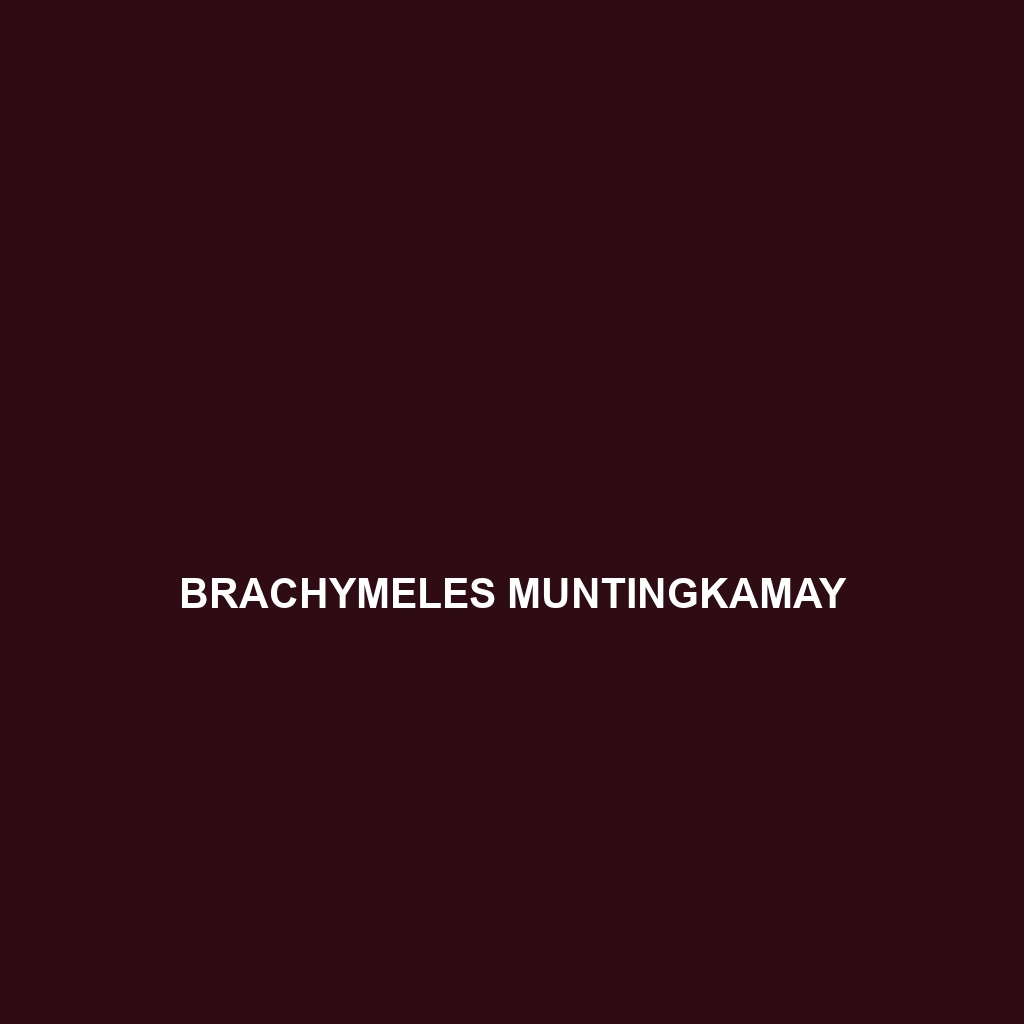Description of Brachymeles muntingkamay
Common Name: Brachymeles muntingkamay
Scientific Name: Brachymeles muntingkamay
Habitat: Brachymeles muntingkamay is primarily found in the Philippines, particularly on the islands of Mindanao and Luzon. This species thrives in subtropical or tropical moist lowland forests and montane forests. They prefer dense leaf litter and are often found in humid environments, allowing them to maintain their moisture levels and find shelter from predators.
Physical Characteristics: This species typically reaches a size of up to 15 centimeters in length. The coloration of Brachymeles muntingkamay can vary, but they commonly exhibit a sleek, elongated body with smooth scales that range from brown to dark green with lighter underbellies. One distinctive feature includes their reduced limbs, making them appear more worm-like, which is an adaptation for burrowing and navigating through soil and leaf litter. Their eyes are small, enhancing their ability to maneuver in their natural habitat
Behavior: Brachymeles muntingkamay is primarily a nocturnal species, exhibiting behaviors typical of fossorial reptiles. They are known for their burrowing habits, using their bodies to navigate through sandy and loamy soils. Their secretive nature contributes to limited visibility in the wild, making them less frequently observed. They are usually solitary, retreating to their burrows during the day and emerging at night to forage for food.
Diet: The diet of Brachymeles muntingkamay consists mainly of small invertebrates, including insects and earthworms. These reptiles are insectivorous and play a significant role in controlling insect populations in their habitat. Their foraging behavior involves using their keen sense of smell to locate food buried in the soil.
Reproduction: Brachymeles muntingkamay typically breeds during the rainy season when the humidity levels are conducive for nest building. The female lays clutches of 4 to 10 eggs, which she buries in moist soil to maintain the right temperature and moisture for the offspring. After incubation, the hatchlings emerge fully formed, capable of independent life, displaying typical parental investment behaviors.
Conservation Status: Currently, Brachymeles muntingkamay is listed as “Vulnerable” on the IUCN Red List. Habitat destruction due to deforestation and land conversion poses significant threats to its population. Conservation measures are essential to ensure the survival of this unique species in its natural environment.
Interesting Facts: Brachymeles muntingkamay is often referred to as the “blind skink” due to its reduced eyesight, which suits its burrowing lifestyle. Additionally, these reptiles can shed their tails, a defense mechanism against predators, making them fascinating subjects for research on regenerative biology.
Role in Ecosystem: As an insectivorous species, Brachymeles muntingkamay plays an important role in the ecosystem by helping to control insect populations and contributing to soil aeration through their burrowing activities. Their presence indicates a healthy ecosystem, and they serve as prey for larger predators, thus contributing to the food web dynamics in their environmental niche.
